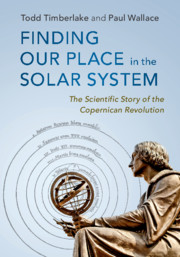Book contents
- Frontmatter
- Dedication
- Contents
- Preface
- 1 Introduction: mysterious skies
- 2 Two spheres: modeling the heavens and the Earth
- 3 Wanderers: the Moon and the planets
- 4 An Earth-centered cosmos: astronomy and cosmology from
- 5 Moving the Earth: the revolutions of Copernicus
- 6 Instruments of reform: Tycho’s restoration of observational
- 7 Physical causes: Kepler’s new astronomy
- 8 Seeing beyond Aristotle: Galileo’s controversies
- 9 The system of the world: Newton’s universal physics
- 10 Confirming Copernicus: evidence for Earth’s motions
- Appendix Mathematical details
- Notes
- References
- Index
6 - Instruments of reform: Tycho’s restoration of observational
Published online by Cambridge University Press: 18 March 2019
- Frontmatter
- Dedication
- Contents
- Preface
- 1 Introduction: mysterious skies
- 2 Two spheres: modeling the heavens and the Earth
- 3 Wanderers: the Moon and the planets
- 4 An Earth-centered cosmos: astronomy and cosmology from
- 5 Moving the Earth: the revolutions of Copernicus
- 6 Instruments of reform: Tycho’s restoration of observational
- 7 Physical causes: Kepler’s new astronomy
- 8 Seeing beyond Aristotle: Galileo’s controversies
- 9 The system of the world: Newton’s universal physics
- 10 Confirming Copernicus: evidence for Earth’s motions
- Appendix Mathematical details
- Notes
- References
- Index
Summary
While the Copernican theory was endorsed by some writers such as Thomas Digges and Giordano Bruno, most astronomers remained skeptical of a moving Earth. One such skeptic was Tycho Brahe, who set out to reform astronomy through improved observational methods. His careful observations of a new star (or “nova”) and a comet indicated that change could occur in the heavens, in contrast to the teachings of Aristotle. However, his observations of the angular size of stars seemed to contradict Copernicus’ theory. Tycho proposed a new geoheliocentric model in which the Earth sits at rest at the center of the cosmos and the Sun orbits around the Earth, but the planets orbit around the Sun. This model retained the stationary Earth but included some of the best features of the Copernican model. In an attempt to find evidence for his model, Tycho made extraordinarily extensive and accurate measurements of planetary positions, particular of the planet Mars.
- Type
- Chapter
- Information
- Finding our Place in the Solar SystemThe Scientific Story of the Copernican Revolution, pp. 147 - 174Publisher: Cambridge University PressPrint publication year: 2019

